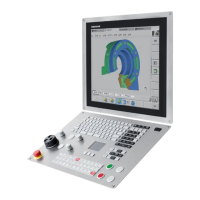NC programming | smart.Turn and DIN/ISO programming
1
42
HEIDENHAIN | User's Manual smart.Turn and DIN Programming | 12/2017
1.1 smart.Turn and DIN/ISO programming
The control supports the following types of programming:
Conventional DIN/ISO programming: You program the basic
contour with line segments, circular arcs and simple turning
cycles. Use ISO Mode in smart.Turn operating mode
DIN PLUS programming: The geometrical description of the
workpiece and the machining process are separated. You first
program the geometry of the blank and finished part. Then you
machine the workpiece, using contour-related turning cycles.
Use ISO Mode in smart.Turn operating mode
smart.Turn programming: The geometrical description of
the workpiece and the machining process are separated. You
program the geometry of the blank and finished part, and you
program the machining blocks as Units» Use Units» in the
smart.Turn mode of operation
Depending on the type and complexity of your machining task,
you can use either simple DIN/ISO programming, DIN PLUS
(ISO) programming or smart.Turn programming. All three named
programming modes can be combined in one NC program.
In DIN PLUS and smart.Turn programming, contours can be
described with ICP interactive graphics. ICP saves the contour
descriptions as G codes in the NC program.
Parallel operation: While you are editing and testing programs,
your machine can run another NC program.
In smart.Turn operating mode you can create a program
list (Automatic jobs) that is run automatically in Program
run mode.
Contour follow-up
With DIN PLUS and smart.Turn programs, the control uses Contour
follow-up. The control takes the Workpiece blank as a basis and
accounts for each cut and each cycle in Contour follow-up. Thus
you can inspect the current contour of the workpiece during
each machining stage. With the contour follow-up function, the
control optimizes the paths for approach and departure and avoids
noncutting passes.
Contour follow-up is only available for turning operations when a
Workpiece blank has been programmed. It is also performed with
Auxiliary contour.

